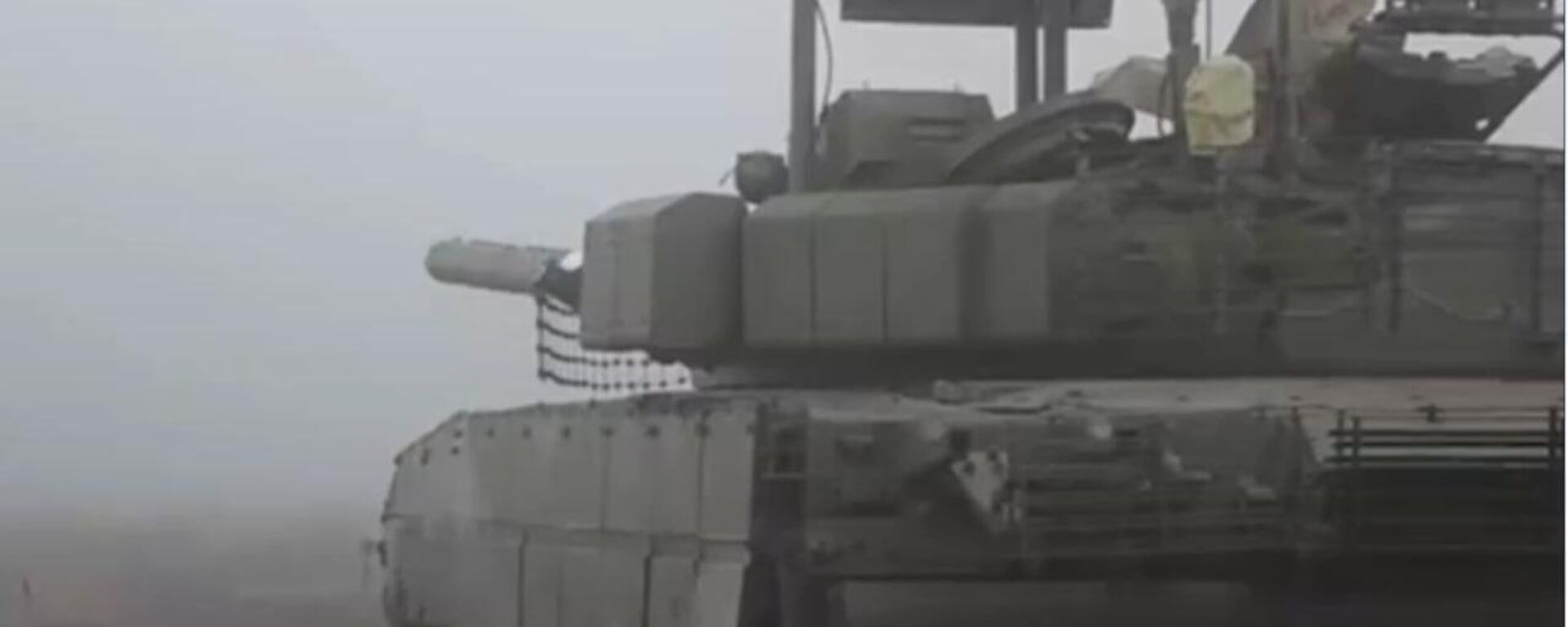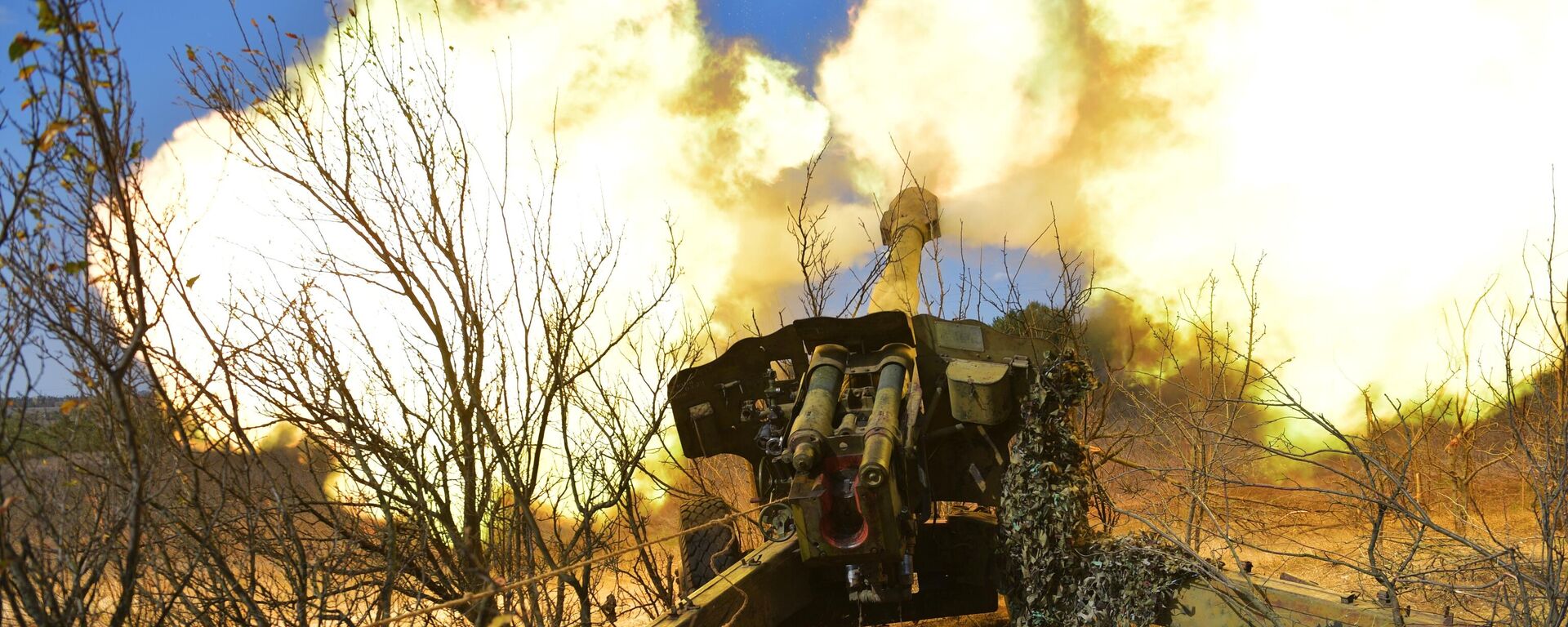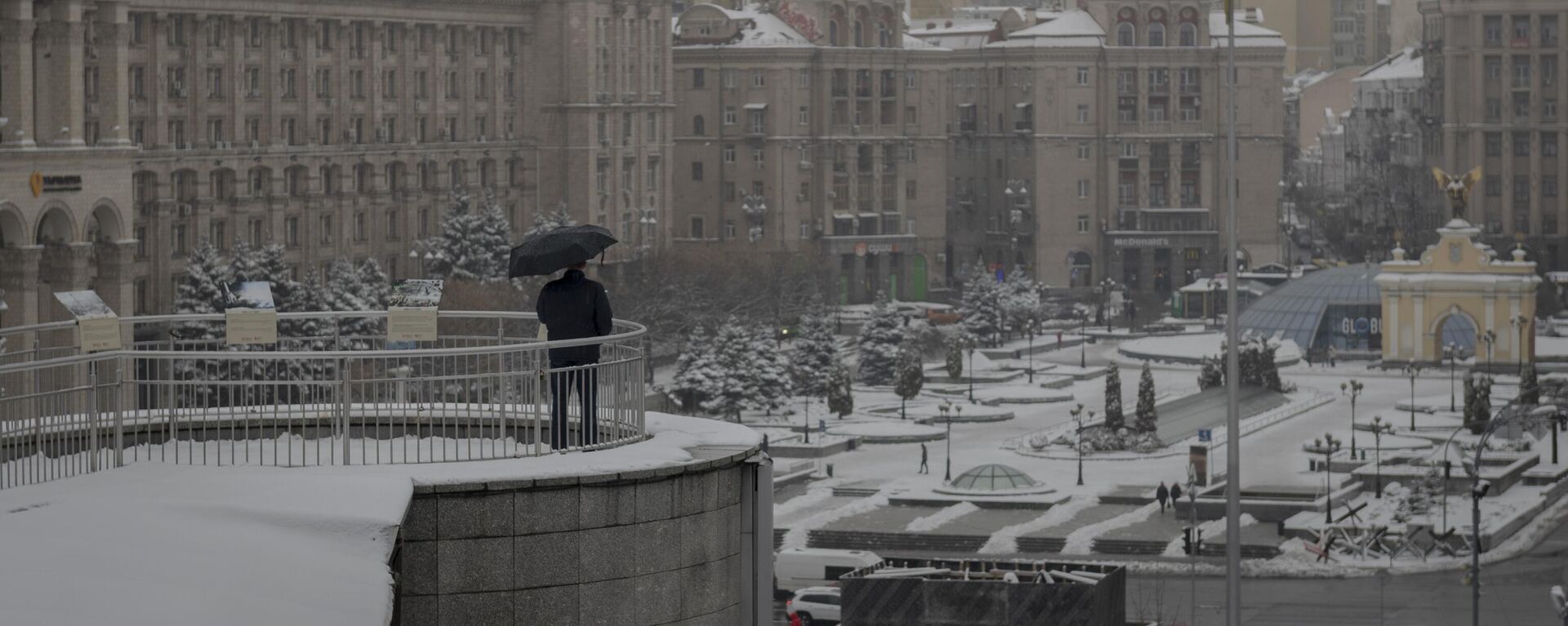Does Ukraine Have Any Chance of Winning 'War of Attrition'?

© Sputnik
/ Subscribe
The Russian military has a clear advantage in an unfolding ‘war of attrition' in Ukraine, as it quickly gets advanced and upgraded weapons, whereas the Ukrainian army is struggling to operate its "hodgepodge" of legacy NATO equipment, US military veteran Mark Sleboda told Sputnik.
Upgraded T-80BVM tanks have been supplied to the Russian units fighting in the Zaporozhye area of the special military operation. The armored vehicles boast a fundamentally new communications system and additional armor modules which enable them to withstand strikes from drones and anti-tank missiles.
On the other sides of the barricades, complaints have been heard about the poor performance of the much-lauded German-made Leopard tanks. As it turned out, very few of the Leopard 1 and 2 tanks delivered to Ukraine by Germany were operational with logistics and spare part dilemmas amplifying the problem.
According to Mark Sleboda, a Moscow-based international relations security analyst and US military veteran, Ukraine has little if any odds of winning a war of attrition with such equipment.
"In this conflict, Russia is using its most modern, regularly used battlefield tank, the T-90 Proryv, it is receiving hundreds of new tanks of this caliber a year," Sleboda told Sputnik's Critical Hour podcast. "But both sides of this conflict are also using upgraded tanks as well. Soviet legacy tanks, as well as we have seen recently, but actually most of the Leopards, number wise, that the Kiev regime has received, are actually upgraded Leopard 1s from the 1950s. Well, they actually only got a couple of dozen of the more modern Leopard 2A6s and 2A4s."
"So both sides are making extensive use of older tank chassis that have received very modern upgrades. And the Russian T-80BVM in particular has a very extensive upgrade package. (...) This modernized, upgraded version of the T-80 is right up there with the best of Western modern main battle tanks right now."
The most interesting upgrades that the new T-80BVM is getting are anti-drone units, according to Sleboda. These are electronic warfare units that are fitted to each individual tank to help jam and stop first-person view and other drone attacks on the tank. The expert pointed out that the reports from the field show very good results with this EW equipment. "The drones are being dragged out of the mud when they're attacking these things," the security analyst remarked.
What's more, Russia is not having the logistical problems that the Kiev regime is having with their tanks, the military expert continued. The crux of the matter that the Russians are producing their own tanks; they have spare parts and therefore are capable of repairing their armored vehicles; the Russians have an enormous fleet of older machines they could upgrade; and on top of that the Russian military has been extensively trained to operate those tanks, Sleboda explained.
For their part, Ukrainians are "stuck with a hodgepodge of dozens of different systems, a few Challengers, a few Abrams, a few Leopard 2s, a hundred or so Leopard 1s," he noted.
"They've been pulling some Ts, old Soviet T-55s out of storage and using them - all kinds of crazy things. And the Kiev regime is not capable of even operating effectively because they don't have the trained personnel, much less maintaining them and maintaining a supply parts chain for them. This logistical nightmare really is a very severe hampering of the Kiev regime military in this conflict that Russia does not have. But that's what happens when you try to create a proxy army in the middle of a war, particularly one like with NATO countries, that has different military equipment from two dozen different countries. It's not a good situation for the Kiev regime to find itself in."
In March, Russian President Vladimir Putin told journalists that the Russian Federation would produce more than 1,600 tanks a year, while the total number of these combat vehicles would be more than three times the number of the same equipment in Ukraine's possession.
"[It should be] compared to around 450, again, a hodgepodge of different tanks, many older, a few newer provided by Western countries to Ukraine in a very unsustainable level at that. No matter how much intelligence, no matter how well or not the Kiev regime troops may fight, there is an industrial logic to a war of attrition here. That is the conclusion is unable to be escaped."
A war of attrition means smashing an adversary's physical capacity to fight, its ability to replenish its stockpiles of weapons and replace its fallen soldiers. It appears that Ukraine does not have much chance of prevailing in this sort of a conflict given the Kiev regime's huge losses on the battlefield (about 160,000 people over six months); dwindling military supplies from the West; and inability to launch full-scale military production in its territory.




